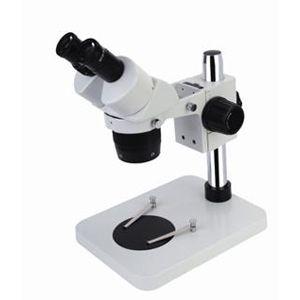What Are the Main Components of a Stereo Microscope?

A stereo microscope is composed of several key components working in harmony:
l Eyepieces: These are the lenses you look through to observe the specimen. Most stereo microscopes have adjustable eyepieces to accommodate different eye distances.
l Objective Lenses: Located near the specimen, these lenses magnify the image before it reaches the eyepieces. Stereo microscopes typically have multiple objective lenses for varying magnifications.
l Body: This is the main frame of the microscope, housing the optical components and mechanical parts.
l Stage: The platform where the specimen is placed for observation. It often has features like clips or a movable plate for securing the specimen.
l Focus Controls: These knobs adjust the microscope's height to bring the specimen into sharp focus. Coarse and fine focus controls are common.
l Light Source: This provides illumination for the specimen. It can be built-in or external, and the type of light (incident or transmitted) depends on the microscope model and the nature of the specimen.
l Arm and Base: The arm supports the microscope body, while the base provides stability.
l Zoom Control: Many modern stereo microscopes have a zoom mechanism, allowing for continuous magnification adjustment without changing objective lenses.
These components work together to provide a clear, three-dimensional image of the specimen, making the stereo microscope a versatile tool for various applications.
- Art
- Causes
- Crafts
- Dance
- Drinks
- Film
- Fitness
- Food
- Giochi
- Gardening
- Health
- Home
- Literature
- Musica
- Networking
- Altre informazioni
- Party
- Religion
- Shopping
- Sports
- Theater
- Wellness


